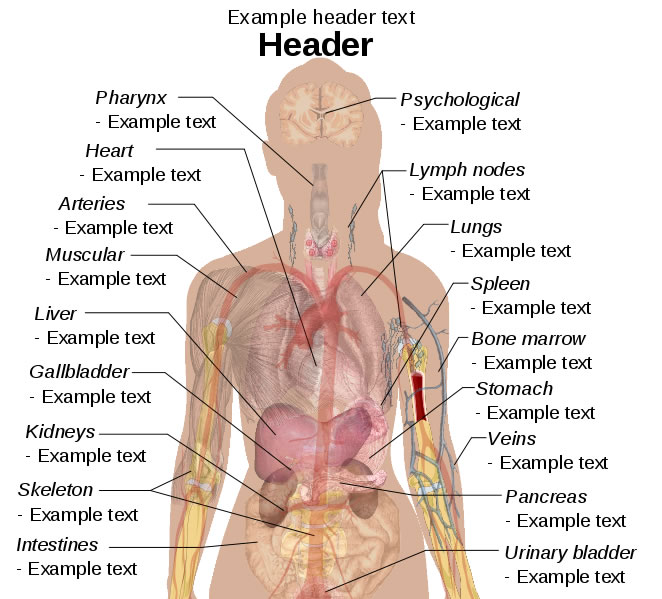At the beginning of the tract, just inside the opening of the vagina, is the hymen, a mucous membrane. In virgins, the hymen usually encircles the opening like a tight ring, but it may completely cover the opening. The hymen helps protect the genital tract but is not necessary for health. It may tear at the first attempt at sexual intercourse, or it may be so soft and pliable that no tearing occurs. The hymen may also be torn during exercise or insertion of a tampon or diaphragm. Tearing usually causes slight bleeding. In women who have had intercourse, the hymen may be unnoticeable or may form small tags of tissue around the vaginal opening.
Vagina:
The vagina is a tubelike, muscular but elastic organ about 4 to 5 inches long in an adult woman. It connects the external genital organs to the uterus. The vagina is the organ of sexual intercourse in women. The penis is inserted into it. It is the passageway for sperm to the egg and for menstrual bleeding or a baby to the outside.
Usually, there is no space inside the vagina unless it is stretched open—for example, during an examination, sexual intercourse, or childbirth. The lower third of the vagina is surrounded by elastic muscles that control the diameter of its opening. These muscles contract rhythmically and involuntarily during orgasm.
The vagina is lined with a mucous membrane, kept moist by fluids produced by cells on its surface and by secretions from glands in the cervix (the lower part of the uterus). A small amount of these fluids may pass to the outside as a clear or milky white vaginal discharge, which is normal. During a woman's reproductive years, the lining of the vagina has folds and wrinkles. Before puberty and after menopause, the lining is smooth.
Uterus and cervix:
The uterus is a thick-walled, muscular, pear-shaped organ located in the middle of the pelvis, behind the bladder, and in front of the rectum. The uterus is anchored in position by several ligaments. The main function of the uterus is to sustain a developing fetus. The uterus consists of the cervix and the main body (corpus).
The cervix is the lower part of the uterus, which protrudes into the upper part of the vagina. It can be seen during a pelvic examination. Like the vagina, the cervix is lined with a mucous membrane, but the mucous membrane of the cervix is smooth.
Sperm can enter and menstrual blood can exit the uterus through a channel in the cervix (cervical canal). The cervical canal is usually narrow, but during labor, the canal widens to let the baby through. The cervix is usually a good barrier against bacteria, except around the time an egg is released by the ovaries (ovulation), during the menstrual period, or during labor. Bacteria that cause sexually
The channel through the cervix is lined with glands that secrete mucus. This mucus is thick and impenetrable to sperm until just before ovulation. At ovulation, the consistency of the mucus changes so that sperm can swim through it and fertilization can occur. At this time, the mucus-secreting glands of the cervix can store live sperm for up to about 5 days, but occasionally slightly longer. These sperm can later move up through the corpus and into the fallopian tubes to fertilize an egg. Almost all pregnancies result from intercourse that occurs during the 3 days before ovulation. However, pregnancies sometimes result from intercourse that occurs up to 6 days before ovulation or during the 3 days after ovulation. For some women, the time between a menstrual period and ovulation varies from month to month. Consequently, pregnancy can occur at different times during a menstrual cycle.
The corpus of the uterus, which is highly muscular, can stretch to accommodate a growing fetus. Its muscular walls contract during labor to push the baby out through the cervix and the vagina. During the reproductive years, the corpus is twice as long as the cervix. After menopause, the reverse is true.
As part of a woman's reproductive cycle (which usually lasts about a month), the lining of the corpus (endometrium) thickens. If the woman does not become pregnant during that cycle, most of the endometrium is shed and bleeding occurs, resulting in the menstrual period.
Hot Photos Pics Images Wallpapers
Hot Photos Pics Images Wallpapers
Hot Photos Pics Images Wallpapers
Hot Photos Pics Images Wallpapers
Hot Photos Pics Images Wallpapers
Hot Photos Pics Images Wallpapers
Hot Photos Pics Images Wallpapers
Hot Photos Pics Images Wallpapers
Hot Photos Pics Images Wallpapers
Hot Photos Pics Images Wallpapers
Hot Photos Pics Images Wallpapers











No comments:
Post a Comment